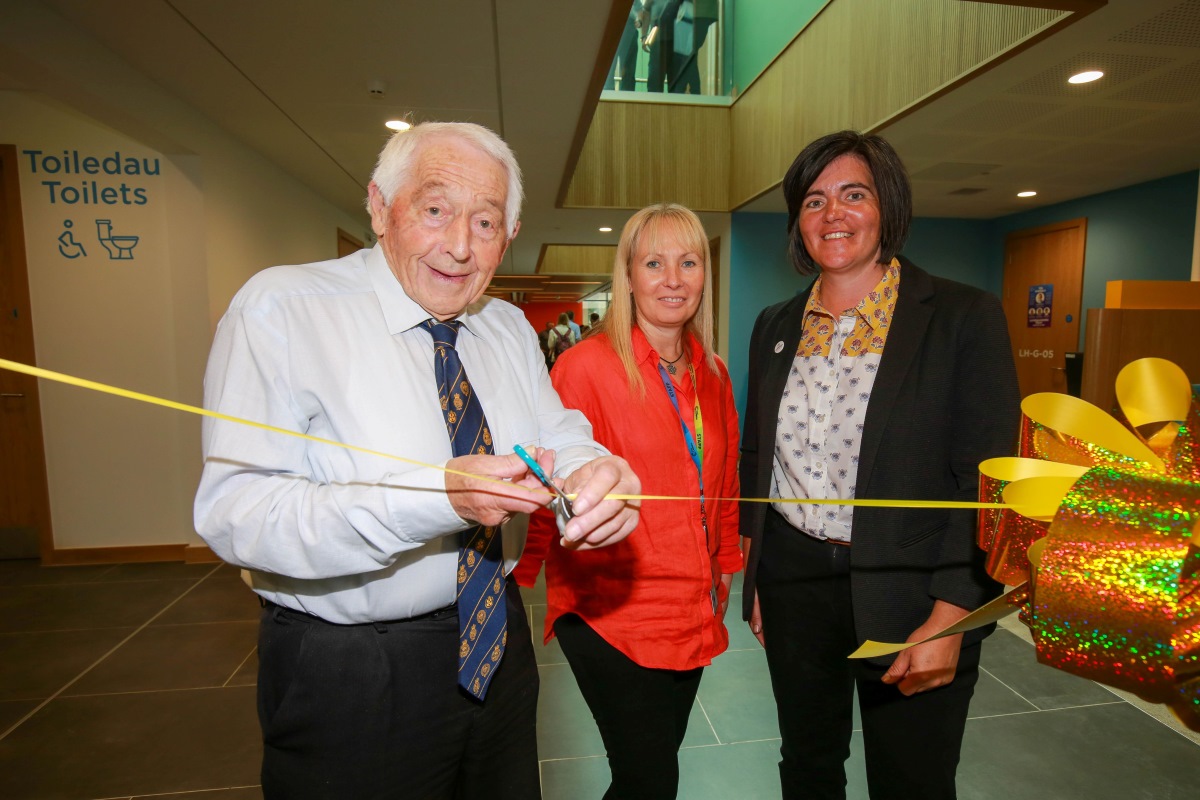One in seven employees don’t think that their leaders lead inclusively

A new study by HR software provider Ciphr, released for National Inclusion Week, shows that managers and employees share notably different opinions on how diversity, equity, inclusion and belonging (DEI&B) initiatives are being prioritised at work.
While the majority (77%) of the 1,000 people surveyed recognise that their employers do take diversity and inclusion seriously, employees appear less positive than bosses about many aspects of their organisations’ DEI&B efforts.
One of the biggest discrepancies in viewpoints highlighted by the research is that many leaders may not lead as inclusively as they think they do. Over three-quarters (77%) of those in leadership and senior management positions believe that they lead inclusively, but just three-fifths (60%) of non-management staff and two-thirds (65%) of junior and middle managers agree with them.
One in seven (15%) non-managers don’t think that their leaders lead inclusively. What this potentially means is that thousands of UK leaders and senior managers could be failing their employees when it comes to DEI – by not being inclusive in their actions and behaviour.
Other survey questions that polarised employees and leaders the most were those centred around peoples’ sense of belonging, how comfortable they feel bringing their authentic selves to work, and whether they think they have a voice in their organisation.
Worryingly, only half (50%) of the non-managerial employees surveyed say they feel a sense of belonging (meaning they feel valued, accepted, and connected to their colleagues, team, and wider organisation) most or all the time. As expected, this sense of belonging varies by career stage and increases with seniority, from 50% of non-managers to 60% of junior and middle managers, and 68% of senior managers.
Nearly a fifth (18%) of all respondents (21% of men and 15% of women) rarely or never feel like they belong at work. It’s even more pronounced for those at the start of their careers, with a third (33%) of 18- to 24-year-olds reporting a lack of sense of belonging most or all the time.
Ciphr’s study also found that a concerning number of employees don’t feel that they have a voice in their organisation, or that their employer encourages, listens to, and acts on feedback. Employee voice matters – as a lack of employee voice implies that their views aren’t being heard or included in conversations and decisions that may directly affect them.
A sizable one in four employees – 29% of non-managers and 23% of junior and middle managers – feel like they have no voice in their organisation at all.
The number of senior managers who don’t feel that they have a voice in their organisation is much lower at 11%. This is still in the double digits, however, which suggests that seniority doesn’t always guarantee equity.
Employees also appear less likely, or feel less confident and comfortable, to be themselves at work, compared to their bosses (14% vs 4%). Younger adults are the most affected by this, with a quarter (25%) of 18- to 24-year-olds reporting that they hide their true selves at work.

How positively employees rate their sense of belonging also varies by the industry in which they work. The majority (69%) of surveyed construction workers, for example, feel they belong at work most or all the time, as do 63% of those in health and social care and 60% of finance and insurance professionals. Yet less than half of employees working in government and public administration (44%), transportation and warehousing (41%), and legal services (33%) feel that same sense of belonging.
Percentage of workers (by industry) who feel a sense of belonging at work most or all the time:
- Construction: 69%
- Healthcare and social assistance: 63%
- Finance and insurance: 60%
- IT and software: 55%
- Retail and wholesaling: 54%
- Manufacturing: 53%
- Education: 53%
- Hospitality and foodservice: 50%
- Government and public administration: 44%
- Transportation, warehousing, shipping and distribution: 41%
- Legal services: 33%
Other interesting findings were revealed when comparing results by ethnicity. Based on the data, white employees appear to be far more critical of their organisation’s inclusivity than employees from Black, Asian and minority ethnic (BAME) backgrounds. The majority (81%) of ethnic minority employees polled think that their organisation has a welcoming and inclusive work culture, and that their leaders lead inclusively (76%). Significantly fewer white employees agreed with either statement (70% and 60% respectively).
The value of belonging at work
There are, of course, obvious benefits to feeling a sense of belonging at work. People who feel they belong at work most or all the time are more likely to be engaged (and enjoy their work) than those who feel they don’t (80% vs 29%). And happy, engaged employees who feel they belong are more likely to stay with their employer for longer.
More than four in five (84%) employees who feel a sense of belonging at work plan to stay with their organisation for at least the next year. That number falls to less than half (43%) for those who don’t feel a sense of belonging at work.

What can employers do?
Ann Allcock, head of diversity at Ciphr and Marshall E-Learning, says: “Ciphr’s DEI&B survey results provide some significant and interesting insights into today’s workplace culture and practices. It’s reassuring that most people feel that they can be themselves at work and think that their organisation has an inclusive work culture. The correlation between employee belonging, and engagement and retention also confirms what we already know about the drivers for DEI.
“But, there’s a large minority who don’t feel like they belong, and that’s an important flag for HR and diversity leaders. It’s an indicator that, if this hasn’t already been explored, there is work to do to fully understand your employees’ experiences, and what they feel would help to increase a sense of belonging for all in your organisation.
“One finding that stands out for me (even though the sample size is relatively small), is how the youngest employees feel less positive about their workplaces across all areas – which is disheartening and concerning.
“We know from other research that young people are more likely than older generations to call out bias at work, which may have become accepted and normalised over time. And that younger employees have higher expectations of their managers and leaders in terms of attitudes, skills and behaviours around diversity and inclusion, which, in itself, is a good sign that increased efforts around DEI and more inclusive recruitment practices are working. If they don’t see or experience the attitudes and skills they expect from their employers, then younger people will be less satisfied with their workplace. Having strong DEI&B credentials can make the difference between attracting, recruiting, and retaining that younger person with potential or not. So, employers would be well advised to consider what these survey results mean for them.
“Inclusion is about being proactive. There is so much that employers can do to enhance inclusion and belonging in their organisations. So, it’s important to focus your efforts and signal your commitment to delivering inclusion through training and policies, implemented from the top down; through clearly identifying individual responsibilities; and by fostering a workplace culture that understands, respects, and values each employee.”
Actions that employers can take to improve diversity and belonging in their workplace include:
- Carry out a bespoke survey within your organisation so that you know how staff really experience the workplace culture – and what employees of different ages want and need in the workplace. It’ll help identify the issues that you have to tackle immediately.
- Ensure that employees with marginalised identities have a voice that is heard, respected, and taken notice of. Setting up employee networks or employee resource groups, or holding focus groups, are good first steps.
- Look at your recruitment process – are you attracting a diverse set of candidates? Check that any imagery and wording used in your adverts doesn’t exclude any particular groups or individuals. You could also invest in recruitment software and processes that anonymise candidates to minimise the opportunity for bias.
- Ensure your DEI agenda has a specific focus on age inclusion, catering for younger employees as well as older generations. Listening and acting on feedback from all ages is the best way to ensure you’re utilising the potential of younger workers, as well as encouraging older workers to stay in the workplace. It will also keep your organisation’s policies, practices, and systems fair and relevant.
- Think carefully about your DEI training and learning resources. Ask yourself: are they relevant, appropriate and impactful? Are they readily available to all workers? Do managers and leaders understand what it means to lead inclusively, are they confident in this, and do they have all the support they need? And do all employees know how they can play a role in contributing to an inclusive workplace? If you’re unsure of the answers or it’s a flat no, then it’s time to invest in new content and training.
Ciphr conducted an online survey of 1,000 employed UK adults in June 2023. The results, which form part of an employee experience in the UK study, are available here.
Ciphr is a leading UK-based provider of integrated HR, payroll, learning and recruitment solutions. Ciphr also offers off-the-shelf and bespoke eLearning content, through its subsidiary Marshall E-Learning (a specialist diversity and inclusion learning provider). More than 600 organisations use the group’s people management solutions globally across the public, private and non-profit sectors.
Marshall E-Learning has just launched a new suite of Diversity micro learning courses on inclusive line management, inclusive recruitment, measuring diversity, equity and inclusion, leading diversity, equity and inclusion, and influential diversity, equity and inclusion change agents.










